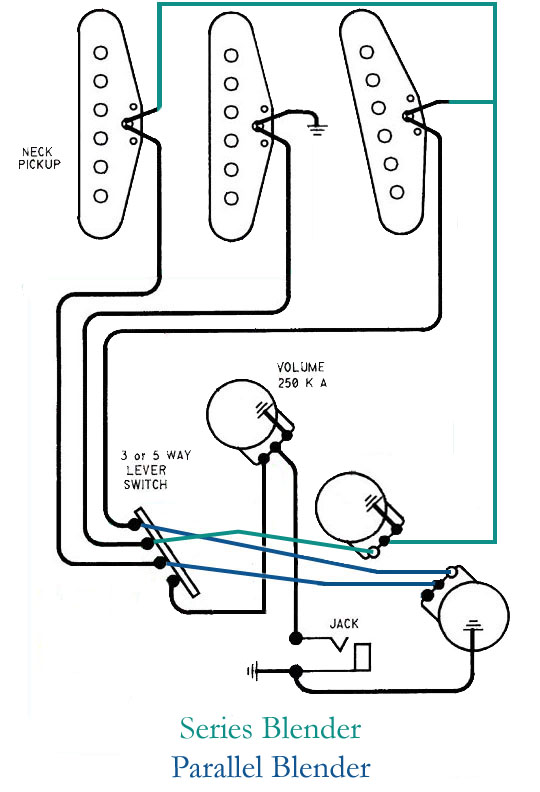


|
|

|
| Section C |
|
Page 12 |
Intonation is the degree to which an instrument stays in tune across its full register. Proper technique is vital; crushing strings down to the frets or sloppy technique that doesn't efficiently move the string straight down to the frets forces notes sharp.Basic Intonation
If the nut is too high, the extra distance the string must be stretched to reach the frets causes fretted notes near the nut to go sharp. (Higher tension heavy gauge strings aggravate this problem.) Nut slots equal to fret height is the ideal. Check this by pressing each string down on the bridge side of the third fret, then see how much the string must move to reach the first fret. It should barely move at all. This is very inexpensive (about $15) to have done by a pro; as a bonus the guitar will play its best. Low action at the nut means lower action all the way up the neck.
On guitars with single coil pickups, the guitar will never intonate properly if the pickups are too close to the strings. Their magnetic pull dampens the string's vibration, causing false overtones as well as choking sustain. For best results, lower the pickups before setting intonation, then raise them afterward checking for intonation problems.
To set intonation, start with new strings tuned to concert pitch. Compare the harmonic at the 12th fret to the fretted note, using a tuner or by ear; they should be identical. If the fretted note is flat, the string is too long. Shorten the string length (moving the harmonic "over" the fret) at the bridge, re-tune the string, and repeat. If the fretted note is sharp, lengthen the string at the bridge, re-tune the string, and repeat.Advanced Intonation
Here the goal is the same; a more sophisticated method is used. There are two problems with using a tuner or your ear to set intonation. The first is the degree to which either detects pitch; the second is that you're comparing two sequential events, seconds apart, recalling the first from memory for comparison.Blender² Mod:
The solution that avoids these admittedly minor sources of possible error is to use wave superposition, the method some use to tune by comparing for example the harmonic at the 5th fret on the A string to the harmonic at the 7th fret on the D string. When these frequencys are not identical, there is a pulsing, throbbing sound which slows down and stops as the frequencies align.
You will need a tone source, such as a synthesizer, set to a plain patch without vibrato or tremolo, and infinite sustain. Select a string and tune its 12th fret harmonic to the synth, using wave superposition. Then check the fretted note the same way. If there is pulsing, bend the note to see if the pulsing increases or slows down. If it increases, the fretted note was sharp and the string needs to be lengthened, and vice versa.
This method avoids the problems described above by not detecting pitch at all, you're listening only for pulses in the volume of the notes. You could be tone deaf and still accurately set intonation this way. Also, you compare both the harmonic and the fretted note to the same reference tone, so it is not dependent on your recall of an earlier reading. This is the most accurate method to set intonation I know of.

This mod keeps all stock pickup combinations, adding five new ones. It can be done in less than two hours, requires no new hardware, and is fully reversable.
The series blender adds the mid pickup in series to positions #1 and #5. This produces a result similar to the active Eric Clapton circuity, where you can dial in the desired amount of mid boost and gain. The two series combos are in phase and hum cancelling, adding humbucker gain and tones to a virtually stock strat. Note that in positions #2 and #4, it will subtract the outer pickup from the parallel mix, acting like a "reverse parallel blender". When turned all the way up, positions 2, 3, & 4 are the mid pickup alone.
The parallel blender adds the bridge pickup to positions 1 & 2, and the neck pickup to positions 4 & 5. This adds two new combinations: (1) the two outer pickups in parallel (quite Tele-like) and (2) all three pickups in parallel.
These two mods may be done separately, but together they yield an additional combination: the two outer coils in parallel, in series with the mid pickup. The full mod doubles the number of possible Strat pickup combinations. Estimated cost: $.10 worth of wire and solder.